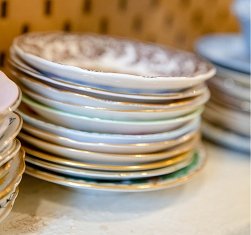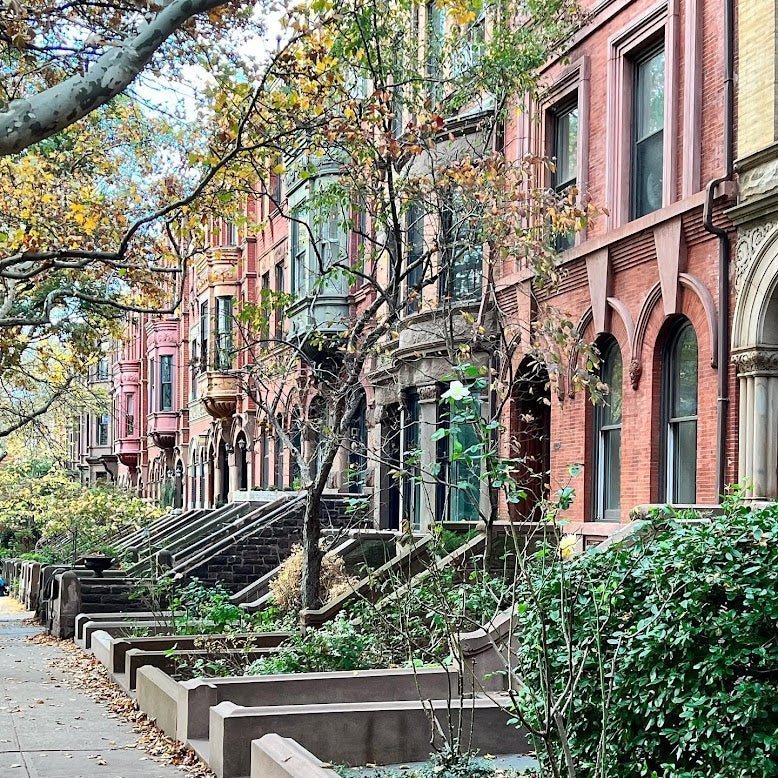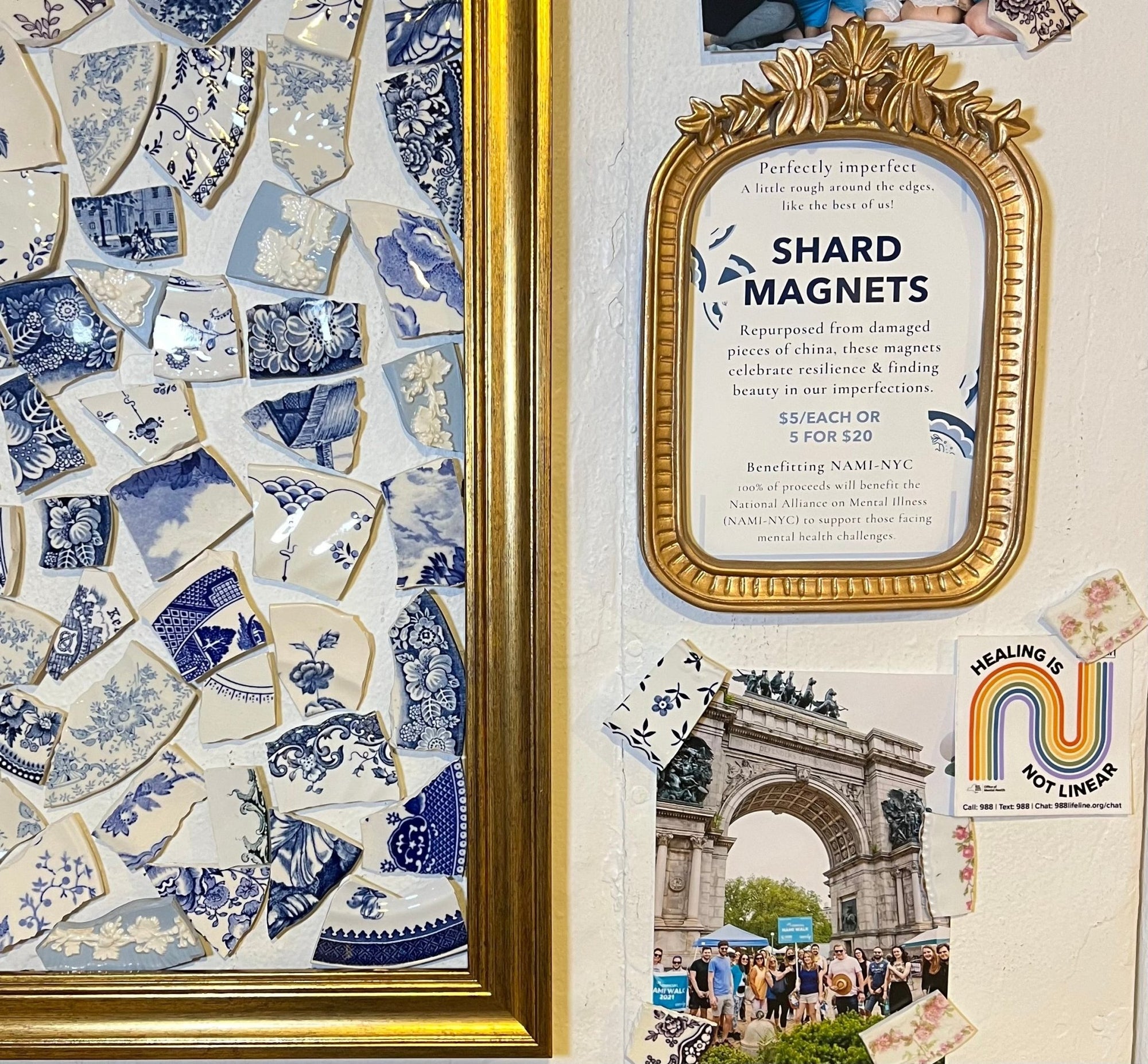Having worked with people at various stages of their decluttering and downsizing journeys, I've learned a thing or two about decluttering and holding on to the things that matter. Here a few things to keep in mind, plus a few resources you can reference to get it done without losing your mind.
Why Decluttering Is Hard
The process of decluttering can be both physically and emotionally draining. Our belongings are often tied to memories of people and events in our lives, and letting go of them can feel like losing a piece of ourselves.
It's easy to feel overwhelmed and not know where to start. For that reason, I recommend consulting with pros, like the trusted folks at the National Association of Senior & Specialty Move Managers (NASMM) and the National Association of Productivity and Organizing Professionals (NAPO). These organizations provide guidance and support for all the common pain points that can arise during a move. They know which local resources to point you to in order to get you unstuck.
Rightsizing: A New Way to Think About Decluttering and Downsizing
When people hear the term “downsizing,” they often associate it with negative events such as job loss or an unfortunate ending. Recently our friends at Wayforth, a national moving solutions and management company credentialed by NASMM, introduced me to the term “rightsizing,” which refers to an intentional process of customizing your living space to fit your current needs. I love this concept and reminder that word choices do matter.
By embracing the process of rightsizing, you can take control of your living space and create a home tailored to your lifestyle. This can be incredibly empowering, as it allows you to make intentional choices about the items you keep and the ones you let go. As Matt Paxton, decluttering expert and author of Keep The Memories, Lose the Stuff, explores in his book, this process of rightsizing has the power to create both physical and psychological space.
Paxton describes the process as a catharsis: "Decluttering is not just about getting rid of stuff, it's about creating space for the things that matter most to us. It's about making room for the memories and experiences that bring us joy and connection."
In other words, after clearing out the things you’ve put off tackling for so many years, you get the rare opportunity to bring back some of the good stuff that you may have crowded out. Rightsizing can also have a positive impact on your mental health. When your living space is cluttered and disorganized, it can be difficult to focus and can lead to feelings of anxiety. In contrast, an organized living space is an environment that promotes calm and relaxation, improving your mood and well-being. Who doesn’t want that?
A Feel-Good Solution for the Pre-Loved Porcelain & Family Heirlooms
For many of us, family heirlooms and sentimental items can be the most challenging things to let go of, even if we haven’t used them in years. Many of our possessions are tied to memories of people and events in our lives, and letting go of them can feel like we’re losing a piece of ourselves.
But on reflection, it’s ironic that we may try to protect treasured possessions them by hiding them away, thereby preventing loved ones (including the next generation) from developing an appreciation for them.
Hence, internet memes like this—with younger generations scoffing at the idea of affording family heirlooms the same level of esteem their parents do.

Kate Bernot, managing editor for The TakeOut, writes about this scenario in her piece "What Should Young People do with Grandma's China." When her grandmother offers Kate a large collection of teacups, it brings on feelings of obligation and guilt.
To process her reaction to her Oma’s offer, Kate speaks with Dr. Linda Price, professor of marketing at the University of Oregon. Price, who has spent her career studying what she describes as “how we make meaning out of the stuff we own,” is not at all surprised by Kate’s reaction. She offers the following explanation:
“If you want to have your teacups go forward, you have to make those teacups valuable to the next generation. You can and should emphasize that they’re fragile, but if you take them completely out of circulation, they won’t get passed forward because they won’t have meaning.... You have to be displaying them and telling stories about them that give their heritage, how you came to own them, why they’re culturally significant."

The way to encourage loved ones to create meaning out of the objects, according to Price, is to "map them onto rituals.” As Price points out,” food is a major part of most rituals, so meals and their accoutrement, like china, tend to have serious sticking power when it comes to emotional value.”
For example, if grandchildren enjoy special holiday meals with grandma’s china, or see pieces used and displayed in spaces around their homes, they’re more likely to value the pieces and want to keep them when the time comes.

For those of you feeling guilty about getting rid of things you don’t use….
Marlene Stum, a professor of social science at the University of Minnesota, offers some reassuring words: “If you acknowledge that you don't need to keep everything to keep the memories… you still can pare down to what’s practical and meaningful.” In other words, if you can recognize that you aren’t throwing away Great Aunt Josephine just because you donated most of her teacups to your local Goodwill, you will make this process much easier on yourself.
Instead of simply storing unused items away in boxes and enduring the guilt, remedy the situation by selecting pieces that hold special meaning and find ways to use them that honors their significance. By focusing on the richness and cherished memories added to your everyday life by having some of these beautiful objects around you, you will not feel as though you're sacrificing something when you give away the rest.
Downsizing the Family China with The Brooklyn Teacup

If you're currently contemplating the fate of your beautiful dishware — perhaps it's no longer being used and your loved ones haven’t expressed interest — we've got you covered! Our china upcycling service helps you turn your dishware into a wide variety of unique serving pieces and décor that just about anyone can enjoy.

What we create using your vintage china.
After picking out the pieces you’d like to create, we recommend revisiting the “do you want the family china?” conversation with your loved ones. Your daughter may not have wanted your 72-piece wedding china set, but she might just love the idea of a jewelry tray or 3-tier tray made from it.
We would be honored to work with you to preserve your family memories. Book a consultation to transform your china or go through our new self-checkout process.
Conclusion
With The Brooklyn Teacup, you can hold onto the sentimental value of the good china while decluttering your space and simplifying your life. If you're having a hard time letting go, don't hesitate to contact us. Our experience working with clients over the years has shown that upcycling and repurposing some of these pieces into timeless keepsakes can make the decision to part with a larger set much easier.
The Brooklyn Teacup is a small, woman-owned business that specializes in repurposing pre-loved porcelain dinnerware into contemporary, functional heirlooms. Through our upcycling process, we create practical décor that fits into your life. We take pride in helping our clients to free up space in their cupboards with a clear conscience and producing meaningful, one-of-a-kind pieces that families can enjoy for generations to come.
____
Are you preparing for a big move and in need of help decluttering your home? “Rightsize” with intention by consulting resources provided by reputable organizations such as the National Association of Senior & Specialty Move Managers (NASSM) and the National Association of Productivity and Organizing Professionals (NAPO).



